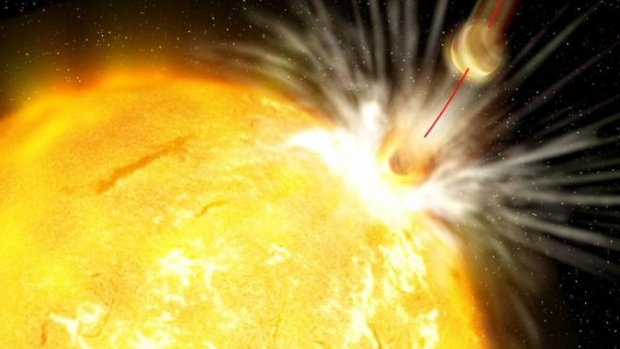
Just like the Death Star in the sci-fi film Rogue One: A Star Wars Story, researchers have actually discovered a Death Star that is similar to the Sun and is believed to have "eaten" most of its planets.
Researchers say that this "solar twin" or Sun-like star contains four times more lithium than would be expected in a star that is 6 billion years old. It also has heat-resistant metals called refractory elements. These create the mass of terrestrial planets and asteroids present in the inner asteroid belt, which includes all the planets present between Earth's Sun and Mars.
This solar twin is dubbed HIP68468. It's 300 light-years away from the Sun and is believed to have "eaten" one or more planets. This Sun-like star also has an exoplanet — a planet that orbits a star other than the Sun. Studying a solar twin is rare, but researchers are not coming to any conclusion based on a single solar system.
"It doesn't mean that the sun will 'eat' the Earth any time soon," co-author Jacob Bean, assistant professor at University of Chicago, said, according to the university website. "But our discovery provides an indication that violent histories may be common for planetary systems, including our own."
Analysing solar stars and their links with the planet orbiting them is considered rare. The history of how many planets have been gulped by a Death Star depends on the compounds that the star comprises. The presence of excess refractory elements and four times more lithium in this death star points towards the consumption of rocky planets in abundance.
"The research team plans to study more stars like this to see whether this is a common outcome of the planet formation process," co-author Megan Bedell said.
Stars like this one and the Sun are said to consume lithium over time, the researchers stated. Planets are found to preserve lithium because they have lower inner temperatures. Ergo, the lithium present in the planet, stands out when it gets swallowed by a star.
"It's as if we saw a cat sitting next to a bird cage," said Debra Fischer, an astronomy professor at Yale who wasn't involved in the study.
"If there are yellow feathers sticking out of the cat's mouth, it's a good bet that the cat swallowed a canary," Fischer added.
This research has been published in the journal Astronomy & Astrophysics.

















